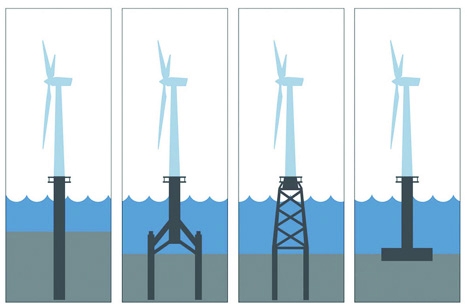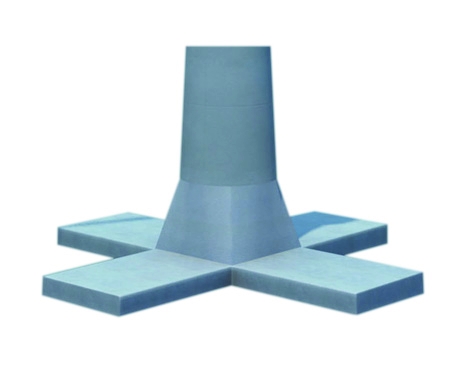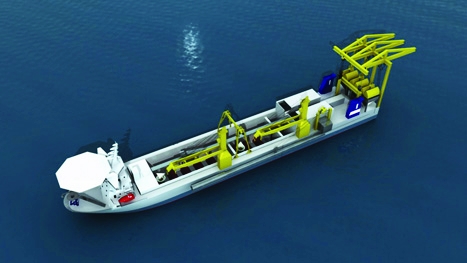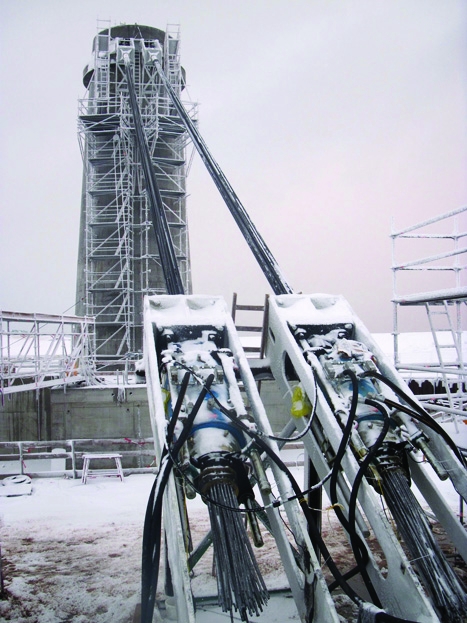When Germany announced that it was effectively turning its back on nuclear power by mothballing all of its reactors by 2022, there were more than a few surprised faces and some awkward questions.
How exactly did the country think it was going to meet its energy needs? Surely it would have to import considerable amounts from neighbouring France, thereby subscribing to nuclear by proxy.
The answer was perhaps even more surprising. On 1 January this year, the German parliament enshrined into law an act requiring that by 2020 35 per cent of all of its energy needs must be provided by renewable sources, followed by 50 per cent by 2030 and 80 per cent by 2050 — far more ambitious in scope and magnitude than the European Union’s target of 20 per cent by 2020.
Germany was already making good progress in the sector, particularly with offshore wind and geothermal energy. There are currently eight operational offshore wind farms, generating around 200MW. To meet the first set of 2020 targets, though, calls for upwards of 10GW.
Clearly there needs to be a complete step-change in production; a few parks going up here and there every decade or so simply won’t cut it.
Environmental concerns have become a real obstacle for planning, further protracting the development cycle
Europe’s largest construction company, the Austro-German group Strabag, started dabbling in the offshore wind business around 10 years ago, focusing on its existing strengths of production, transport and installation. It also began experimenting with new designs for base foundations, believing that this was a key limiting factor the overall production chain in offshore wind.
Essentially there are around four main types of wind turbine foundations in use.

When turbines took their first tentative steps from land into the shallow waters just off the coast, they generally employed monopile foundations — a simple design in which the wind tower is supported by a steel pipe, either directly or through a transition piece.
Depending on the subsurface conditions, the pile is typically driven into the seabed by either large impact or vibratory hammers, or the piles are grounded into the sockets drilled into rock. They are reasonably cost effective but not suited to water depths of more than 15m and they struggle to hold turbines greater than 2-3MW.
To handle some of the latest generation of 5-10MW wind turbines, moored in greater water depths many miles off the shore, requires a bit more support. Jacket foundations consist of a frame construction similar to an electricity pylon. It is technology essentially borrowed straight from the oil industry.
The tripile foundation, meanwhile, is a design developed specifically for offshore wind. It consists of a steel pile that sits above the water level on a three-legged structure that has to be pinned to the seabed. Tripiles can be used in water depths between 25m and 50m.
However, all of these methods require some degree of construction at sea with associated costs and environmental impact. There is evidence that drilling and driving turbine foundations into the seabed creates acoustic emissions that cause distress to local mammal populations. It has become a real obstacle for planning, further protracting the whole development cycle and keeping those looming renewable targets out of reach.
But what if you could build the whole turbine on shore, put a big heavy ballast weight on the bottom, float it out on a ship to where it needs to be and plop it in the ocean so it sinks firmly in place?

This is the basic, if rather oversimplified, vision of gravity-base foundations. While the idea has been around for some time, Strabag is arguably the first company to put real faith in it with big-figure investments.
Its gravity-base design consists of a cruciform pre-stressed concrete box girder base measuring 40 x 40m with a height of 8m. At each end of the box girders are single bearing pads, each with an area of approximately 100m’, which transfer the loads to the subsoil. On this base is a shaft that tapers up to the boat access ladders and platform at a total height of 65m. This is then topped with the turbine. To increase the dead weight of the base, the box girders and concrete shaft are filled with sand after installation.
‘We are convinced that it is a more economic and ecological version,’ said Gerald Zangl, managing director of Strabag’s Offshore Wind division.
‘The market asks for some kind of serial manufacturing, and in fact you can’t do that out there off shore under all these conditions, so our concept is to do as much as possible on shore — not only foundations but assembly of the tower and converter, and most probably the rotor blades, and then transport it in a day. It is a huge competitive advantage; we’re convinced we can do a whole wind park in a year.’
The Strabag vision is for a coastal terminal where parts are delivered for wind turbines (some may also be manufactured on site), assembled and put on board a semi-submersible vessel that travels out to the site of the proposed wind farm. A second vessel, moored semi-permanently off the shore, then prepares the seabed ground and the turbine is lowered down at the precise site.
Strabag is now building such a terminal at a cost of around €500m (£408m) — with around €113m of public funding — at a site on the German North Sea coast at Cuxhaven. According to the company, it will be ready for full production by late 2013 and the first pilot project will be a 10-turbine wind park named Albatross 1.
With such large capital at stake, the company had to be sure that its vision was rooted in sound engineering principles.
A single gravity-base-founded wind turbine was tested in 2006 in the Baltic Sea. But this was in firm, rocky seabed soil requiring no ground preparation at all. The German North Sea, where the majority of the potential generating real estate lies, presents more of a challenge, with fine-grained sand left over by glacial retreat.
‘The main concern was having that size of foundation on the seabed that it wouldn’t end up like the Leaning Tower of Pisa,’ said Robert Foyle, a civil engineer and head of Strabag’s UK and Irish operations. ‘If you’re standing on the beach and you wiggle your toes in the sand, you’re going to sink down, and that was what the engineers were worried about: what would be this effect of pore pressure accumulation, which can give a sliding effect on the structure because the sand is saturated and you’re pressurising and releasing it so you get a sucking in and out of the water through the sand granules? The only way to test that was with a 1:1 test model.’
So the company built an €8m full-scale model of the gravity-base foundation essentially on the beach at Cuxhaven to match the soil conditions further out in the North Sea (see box). ‘It’s the German way — we have to be sure to 99.9 per cent before we build it off shore,’ said Dr Udo Hartwig, the engineer responsible for testing.
The data
Strabag is currently building a terminal at a site on the
Gravity-base foundation and turbine
Weight of the foundation with sand ballast: 6,700 tonnes
Weight of complete structure including 5MW turbine : 8,000 tonnes
Total height of foundations: 65m
Maximum water depth: 50m
Maximum distance off the shore: 200 sea miles
Ground preparation vessel
Capability: crane lift and suction dredging
Dredged material capacity: 25,000 tonnes
Total area of wind park excavated: 0.1 per cent
Carrier vessel
Engines: 4x Voith radial propellers
Total power: 35,000hp
Speed: 10 knots
Design: semi-submersible floating technology
Key features: dynamic positioning system
Cuxhaven terminal
Size: 43 hectares
Total investment: ~€500m
Completion date: ~Q4 2013
Production output: 80 turbines per year
Three million test cycles and several terabytes of gathered data later, the engineers were confident the foundation would remain rooted in stormy conditions.
The company is now working on the carrier vessels that will transport the turbines. While borrowing basic principles from oil-rig platforms, it will need to move at some pace to complete wind parks in the projected time.
Strabag has commissioned Voith to build five radial propellers for each carrier: four of the 8-tonne, 5.6MW propellers will be installed at each corner of the ship and another one will be kept as a replacement unit.
The carrier will be able to travel at 10 knots in waves of up to 2.5m and a wind force rating of 6-7. It will therefore provide 270 operational days per year. It will be accompanied by a ground preparation vessel equipped with crane grab and suction dredger.
‘The concept is to excavate sand off the seabed onto the vessel, which is capable of holding around 20,000-25,000 tonnes of dredged material, and then that dredged material is put back into the foundations. In the ideal situation, we go down between 3m and 5m deep — and what we take out, we put back in the base,’ said Foyle. Still, offshore foundations can be affected by ocean currents causing subsoil to be washed out from under the foundation, creating so-called ‘scours’. Strabag has developed a special mesh layer to circumvent this.

In March, the German Federal Maritime and Hydrographic Agency (BSH) for the first time approved the use of concrete gravity foundations in deep waters instead of steel, based on Strabag’s detailed assessments and proposals. It effectively gave the green light to the Albatross 1 farm, which will feature 10 5MW turbines made by XEMC Darwind, the Dutch turbine-making unit of China-based Xiangtan Electric Manufacturing.
But this is the first small baby step compared what is planned and indeed what is required make the whole plan economically viable.
‘We do need constant development; single wind parks are not suited to serial systems,’ said Zagl, adding that once the Cuxhaven facility is up and running it could exploit a large swathe of the German North Sea.
But what about the patch of the North Sea further east? According to Foyle, who heads up Strabag’s British and Irish operations, there are plans at a ‘very advanced stage’ for a serial offshore production capability similar to the one under way at Cuxhaven in the UK.
The concept is to excavate sand off the seabed onto the vessel, which can hold 25,000 tonnes of dredged material
Robert Foyle, Strabag
In December last year, land developer ABLE submitted plans to the National Infrastructure Planning Inspectorate for a Marine Energy Park at North Killingholme on the south bank of the River Humber, north of Immingham. ‘We’ve been in discussion with them for the past 18 months and we’ve given them most of our requirements — we just need to get to the water with a concrete jetty,’ said Foyle. ‘We’ve got eight or nine contenders to supply concrete gravity foundations.’
The one brake on all of this, in both Germany and the UK, is the development of suitable grid infrastructure that can handle peaky loads and the laying of subsea cable networks. Even in Germany there is a lot of catching up to be done.
The question clearly irks Foyle a touch, as it’s one he is used to rebuffing. ‘That’s part of the battle at the moment, but I go back a long way to North Sea gas. Look at all the existing gas pipelines that straddle the North Sea. That was done then and the grid is exactly the same.’
Strabag’s test facility simulated the dynamic loads of wind and waves
Small-scale models of gravity-base wind turbine foundations have been tested previously at German universities. The problem is that, while smaller versions of structures reproduce mechanical behaviour of the real thing quite well, you can’t scale down grains of sand accordingly. And this is absolutely crucial to determining how the soil will behave with 8,000 tonnes on it.
So Strabag built a full, 1:1-scale test facility. It cleared an area of sand 50 x 50 and 7m in depth, put in its bespoke foundation base and filled it with water.

The structure didn’t contain the full turbine with blades but was still 30m high. To simulate the dynamic loads of wind and waves, the company attached cables and hydraulic jacks of the sort it normally uses to hoist parts of skyscraper aloft where cranes are too short.
‘Normally these jacks were used for very low-velocity, very heavy loads, pulled very slowly. Here we have to simulate originalperiods of the wave, which are in the range of five to 20 seconds. We have to change the loads from zero to 1,000 tonnes, then release the load in 10 seconds to zero back,’ said chief engineer Dr Udo Hartwig.
An array of sensors was placed in the soil during hydraulic loading to look out for liquefaction and foundation sinking (the same effect that occurs during some earthquakes).
The engineers found that there was very slight inclination of the foundation under maximum peak wave loads.
When this happened, one of the foundation plates was loaded more than the others, leading to an increase in stiffness of the soil beneath the foundation plate.
However, when the velocity of the inclination slowed down when the wave had passed, the sediment on the opposite side was looser and softer, and so by sheer weight of the gravity foundation this side fell, and the inclination was reversed and self-corrected.




Red Bull makes hydrogen fuel cell play with AVL
Formula 1 is an anachronistic anomaly where its only cutting edge is in engine development. The rules prohibit any real innovation and there would be...